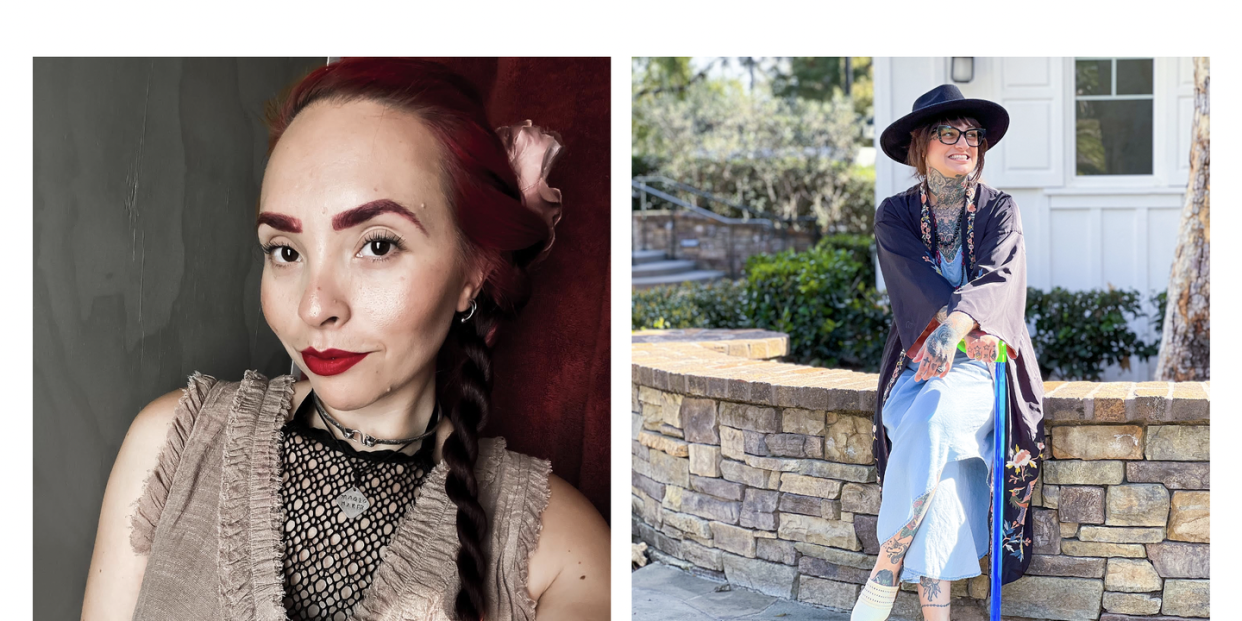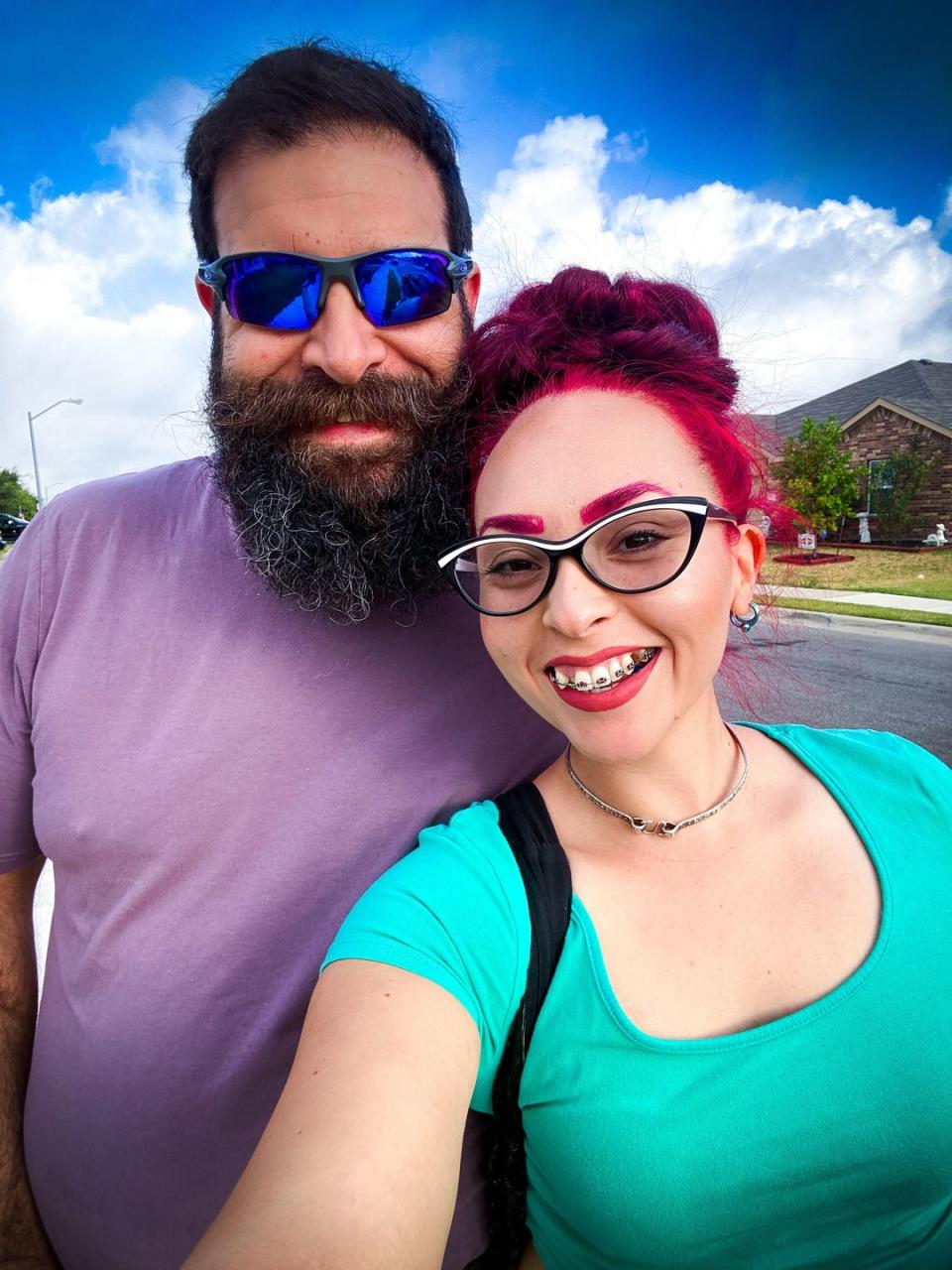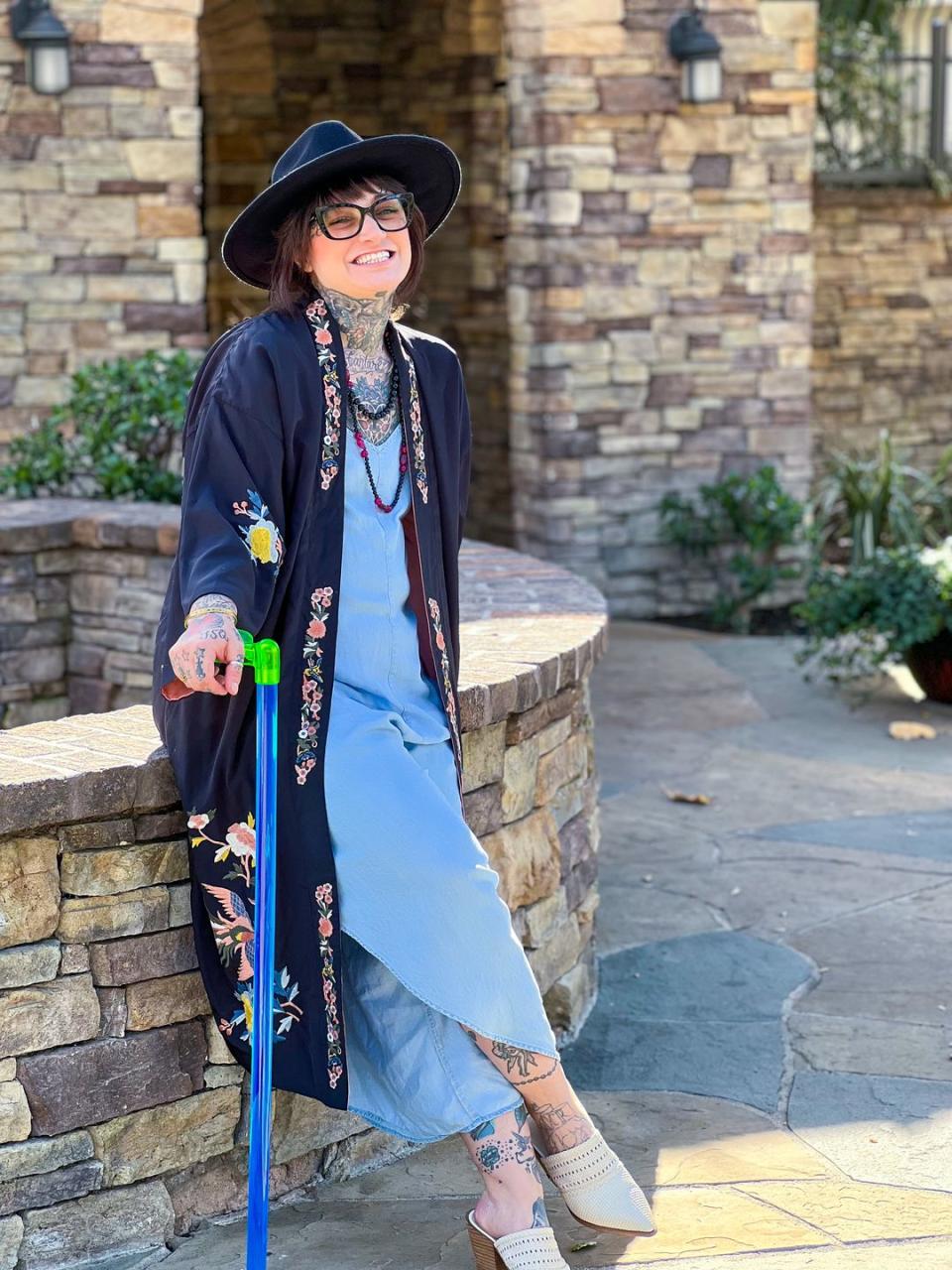This Is The World We Live In—We Live With MS

Nearly 1 million—that’s how many people in the U.S. are living with multiple sclerosis (MS). And yet no two people experience the disease in the same way.
The overwhelming majority of people with the disease—which impacts the central nervous system —have what’s known as relapsing-remitting multiple sclerosis (RRMS). As the name suggests, RRMS is characterized by attacks of new or increasing symptoms. These flare-ups (or relapses) are followed by periods of seeming recovery. During these remissions, some symptoms may disappear, or they may continue and become permanent. This can bring an added layer of unpredictability to an already difficult disease.
But that doesn’t mean it isn’t possible to have RRMS and lead a well-rounded, active life, as these two recently diagnosed women show. Here, they share their stories.

When Katelyn Rachelle, 32, began to experience sinus pressure, migraine headaches, and unexplained fatigue in the summer of 2020, she thought nothing of it. After all, she and her husband, John, are ranchers in Gatesville, Texas; these symptoms are considered the norm when you’re prone to allergies and work outdoors in the state’s heat and humidity. She knew something was off, however, when she woke up one August morning and couldn’t see. This is what happened next, in her own words.
When I woke up, my vision out of my right eye wasn’t completely gone, but it disappeared in certain areas depending on where I focused. I called my optometrist and described the situation, and she asked me to come in immediately. Three days of steroids restored my vision, but neither she——nor the other three eye doctors I consulted——could explain what was going on. I finally took it upon myself to ask my primary care provider for a referral to a neurologist and, four months after my symptoms first started, I was diagnosed with RRMS.
As weird as it may sound, I was relieved—no more stressing about the what ifs—but I was also terrified. I had just turned 30. The life I had and everything I was planning to do vaporized the moment my husband and I walked out of that exam room. I assumed I’d end up in a wheelchair. I also assumed I’d never get past grieving the body I used to live in: In addition to being a rancher and part-time college student, I am a belly dancer. What if I could no longer dance?
There were nights I was afraid to go to sleep for fear I’d wake up with a new or intensifying symptom like I did that August. Perhaps worst of all, though, I worried my husband would leave me if/when my illness progressed to the point where it was too unbearable for him to stay married to me.
I have lived with RRMS for a little more than two years, and I’m not in a wheelchair. My MS is well-managed and stable, and my husband and I are stronger than ever. I’ve had to be patient with my body getting back into belly-dance condition because my coordination and balance fluctuate each day. So do my energy levels.
I realized early after my diagnosis that staying active would keep me from spiraling into a negative headspace. That’s where my calendar comes in. I have my school schedule and doctors’ appointments laid out as top priorities, with everything else following. John primarily manages the day-to-day tasks on the ranch; I give an extra hand on larger projects such as construction, fencing, and loading sheep and goats. Belly dance is my first choice for exercise and self-care. Now I perform only about twice a year, because it takes a lot of energy working through choreography, costuming, and the hustle and bustle on the day of the show.
Because my friends and family don’t see me on the days it takes everything I have to mix a protein shake or change out of sweats, they don’t understand how MS affects my life. They only see the other days when I can run 12-hour days as a volunteer and vendor, and attend workshops during a major belly-dance event. Some have joked that I’ve lived a dozen lives since my diagnosis. There’s no guarantee I’ll be able to do the same things tomorrow, so I explore the opportunities as they present themselves. My philosophy? Carpe momentum!

Brittany Quiroz, 33, was diagnosed with RRMS in 2019. The Temescal Valley, California-based wife and mother of two turned MS advocate, motivational speaker, and writer of the “A Hot MS” blog sees her diagnosis as an opportunity to empower not only herself, but others who are living with the disease. Below, she talks about her experience.
Why was I falling down so much? That was the question I was looking to answer in the summer of 2019. I took a bad fall down a set of stairs after my legs gave out beneath me. In the weeks and months that followed, I wasn’t recovering. I was having trouble stepping into my underwear after I showered. I couldn’t balance or lift my left leg. I was clearly getting progressively worse.
At the recommendation of my primary care doctor, I saw a neurologist, who promptly ordered MRIs, did a few in-office exams, and questioned me about my balance, any numbness or tingling sensations, and the increasingly frequent occasions when my left side would just give out. Turns out, that fall down the stairs was a blessing in disguise. Otherwise, I wouldn’t have pursued the course that led to my MS diagnosis.
When I heard the words “multiple sclerosis,” I knew I had a choice: to either let this new reality destroy me or take it as an opportunity to make a new life for myself. It was my “fight or flight, do or die” moment. Life will always throw us into chaos. It’s up to each of us to decide what we do with it.
I started my brand A Hot MS as a way to get more comfortable with my new reality. Now, I give motivational talks to inspire others, and I write to widen the lens of perception about the disease. Getting to connect with thousands of people worldwide about this disease is the greatest takeaway. I’m an artist by blood. I enjoy songwriting, painting, interior design, and fashion design, and I’m a nut in an antique shop.
When I began walking with a cane, I wanted to feel more confident about it. The only way I could do that was by making it look fabulous. Now I look at my cane as couture and the world as my catwalk. I often receive questions from brazen strangers who are mostly just curious, so I make it a point to educate them about MS.
Fatigue is one of the most challenging symptoms of living with MS. In the three and a half years I’ve lived with this disease, I’ve discovered that balance is key. I’ve learned to accept that it may take me five days to fold one load of laundry, that diet has a huge impact on how I feel, and that making our home an all-hands-on-deck situation allows my family to function as a team.
I give myself permission to approach relapse days like holidays. I’ll relax, postpone meetings, order in for dinner, watch a movie, paint, or write. I used to hold so much guilt for having a day off due to relapse and it only made me feel worse. So now I embrace those days—in the same spirit I embrace what it means to live with MS.
You Might Also Like

